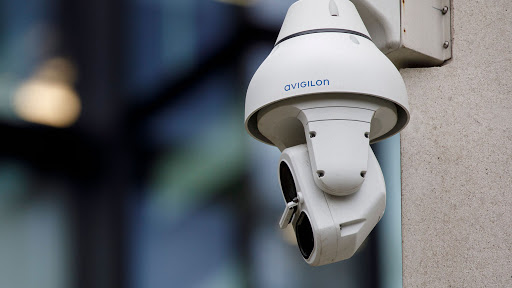
In today’s world, security is not just a necessity; it’s an imperative. The presence of a robust video surveillance system can be the difference between a secure and vulnerable business environment in Western Canada.
Discover what makes a great security camera, the best options for various business needs, and the advanced features of professional surveillance systems. The goal is to be armed with the knowledge to choose a system that not only meets your security needs but also adds value to your business.
Understanding Your Security Needs
Selecting the ideal video surveillance system begins with a detailed understanding of your specific security needs, which vary from one business to another.
Assessing Location and Environmental Risks
The location of your business plays a pivotal role in determining the level of security required. For instance, businesses situated in high-crime areas or secluded locations might need more sophisticated surveillance systems compared to those in safer, well-populated neighbourhoods. Also, consider environmental factors like susceptibility to extreme weather, which would require more durable and weather-resistant cameras.
Understanding the Size and Layout of Premises
The size and layout of your business premises directly influence the number and types of cameras needed. Larger areas might need cameras with wider fields of view or multiple cameras to cover all angles. Complex layouts with multiple rooms or obscured areas may require strategically placed cameras to eliminate blind spots.
Nature of Business and Specific Risks Involved
Different businesses face different security challenges. Retail stores, for example, need to monitor for shoplifting and may benefit from high-resolution cameras to capture clear images of individuals and products. Warehouses or industrial sites, dealing with valuable goods or hazardous materials, might prioritize perimeter surveillance and access control. Offices may focus on securing entry points and sensitive areas, like server rooms.
Traffic and People Flow
Understanding the flow of people and vehicles in and out of your premises is essential. High-traffic businesses, like shopping centers or public venues, may require more cameras to monitor the large influx of people. In contrast, smaller offices or private businesses might need surveillance focused on entry and exit points.
Integration With Existing Security Measures
If your business already has certain security measures in place, like alarm systems or access control, it’s crucial to consider how the new surveillance system will integrate with these. Seamless integration enhances overall security and operational efficiency.
What to Look for in a Security Camera
Best Security Cameras for Business in Alberta
Choosing the best security cameras for your business involves understanding the different types available and their suitability for various applications.
Resolution
The resolution of a camera is perhaps its most critical feature. High-resolution cameras provide clearer images, making it easier to identify faces, license plates, and other important details. For most business environments, a resolution of 1080p is a good starting point, but for areas requiring finer detail, higher resolutions like 4K might be necessary.
Field of View
This determines how wide an area your camera can capture. A broader field of view means you can monitor larger areas with fewer cameras, which can be cost-effective. However, this should be balanced with the level of detail you need; a wider field of view might spread the resolution thinner, potentially reducing the clarity of distant objects.
Night Vision
For continuous surveillance, it’s imperative that your cameras function effectively in low-light conditions or complete darkness. Look for cameras with infrared (IR) night vision capabilities. The range of the night vision, which can vary significantly between models, should align with the distances you need to monitor at night.
Motion Detection
Cameras with motion detection can alert you to activity in real time, making it easier to respond promptly to security incidents. Advanced cameras come with customizable motion zones, allowing you to specify which areas in the camera’s view should trigger alerts.
Durability and Weather Resistance
If you need outdoor surveillance, your cameras must withstand environmental elements. Look for cameras rated with an IP code, which tells you how resistant they are to dust and water. An IP65 rating or higher is recommended for outdoor cameras.
Connectivity Options
Cameras today offer various connectivity options. Wi-Fi cameras provide more flexibility in placement and are easier to install. Wired systems, on the other hand, are more reliable in terms of connection stability and are ideal for permanent, long-term installations.
Audio Capabilities
Some security cameras come with built-in microphones or speakers, enabling audio recording or two-way communication. This can be beneficial for areas where it’s important to not only see but also hear what’s happening, or to communicate with personnel or visitors through the camera.
Storage Options
Consider how the footage will be stored. Cloud storage offers accessibility and convenience, allowing you to access footage from anywhere. Local storage, like SD cards or NVRs (Network Video Recorders), can provide more control over your data and doesn’t rely on internet connectivity.
Dome Cameras
Dome cameras are named for their dome-shaped casing, which makes it difficult to discern where the camera is pointing. This ambiguity can act as a deterrent to potential wrongdoers. They are ideal for indoor environments like retail stores and offices because of their discreet design. Many dome cameras offer a panoramic view, making them suitable for larger areas.
Bullet Cameras
Recognizable by their cylindrical shape, bullet cameras are typically mounted on walls or ceilings. They are excellent for focusing on specific areas and often come with a high-quality zoom feature. Because of their visible nature, they also serve as a visual deterrent to criminal activity. Bullet cameras are versatile and can be used both indoors and outdoors, especially in areas that require a camera with a longer range, like parking lots or backyards.
PTZ (Pan, Tilt, Zoom) Cameras
PTZ cameras offer the ability to pan (move horizontally), tilt (move vertically), and zoom in on specific areas. This flexibility makes them ideal for large, open areas such as warehouses, shopping centers, and parking lots where the field of view changes frequently. They can be controlled manually or programmed to follow specific patterns, offering comprehensive coverage of large spaces.
Wireless Cameras
Wireless cameras are becoming increasingly popular because of their ease of installation and flexibility in placement. They are ideal for businesses that require a quick setup or temporary surveillance solutions. However, it’s important to ensure that they are protected against cybersecurity threats.
Thermal Imaging Cameras
For businesses requiring surveillance in challenging lighting conditions or looking to detect movement based on heat signatures (like industrial sites or businesses with outdoor perimeters), thermal imaging cameras are an excellent choice. They can detect intruders even in complete darkness or through obstructions like smoke and light foliage.
Multi-Sensor Cameras
These cameras combine multiple lenses in a single unit to provide a comprehensive view of large areas. They are beneficial for businesses that need wide coverage without the blind spots that can occur with single-lens cameras.
Professional Surveillance System Features
Professional surveillance systems have evolved significantly, offering a range of advanced features that enhance security and provide comprehensive monitoring solutions.
Remote Access and Control
Modern surveillance systems offer remote access capabilities, allowing business owners and security personnel to monitor live feeds and access recordings from anywhere, at any time, using smartphones, tablets, or computers. This feature is crucial for real-time security monitoring and provides the flexibility to respond to incidents promptly.
Cloud Storage vs. Local Storage
Deciding between cloud and local storage for your surveillance footage depends on your specific needs. Cloud storage offers the advantage of easy accessibility, scalable storage space, and off-site backup, which protects data from local disasters. Local storage provides control over your data with a one-time cost but requires physical protection and maintenance.
AI-Driven Analytics
Artificial Intelligence (AI) has revolutionized surveillance systems. AI-driven analytics can identify patterns, count people, and even detect weapons and specific behaviors like loitering or unattended objects. This technology not only enhances security but also offers valuable business insights, such as customer traffic patterns.
Facial Recognition
Facial recognition technology can identify known individuals, such as employees or flagged persons, offering an added layer of security. This feature is useful in high-security areas or for businesses that need to monitor access to restricted zones.
License Plate Recognition
Ideal for parking lots and gated communities, license plate recognition helps in monitoring and logging vehicles, enhancing perimeter security, and can even integrate with access control systems for automated entry of authorized vehicles.
Cybersecurity Measures
As surveillance systems become more connected, cybersecurity becomes crucial. Ensure the system has strong encryption, regular firmware updates, and secure password practices to protect against hacking and unauthorized access.
User-Friendly Interface and Management Software
The surveillance system should have an intuitive interface and robust management software that allows easy navigation, quick access to live and recorded footage, and efficient management of system settings and alerts.
Cost Considerations
When investing in a professional surveillance system, understanding the various cost components is crucial for making an informed decision.
Initial Installation Costs
The initial cost includes purchasing the cameras and any additional hardware, like recorders and monitors, as well as installation fees. High-resolution cameras, those with advanced features like AI analytics or thermal imaging, typically come at a higher price point. The complexity of the system, such as the need for extensive wiring or integration with existing networks, can also affect installation costs.
Maintenance and Upgrades
Regular maintenance is vital to ensure your surveillance system remains functional and effective. This includes routine checks, cleaning of camera lenses, and updates to software and firmware. Additionally, as technology evolves, upgrading certain components might be necessary to maintain high security standards and benefit from new features.
Storage Costs
Depending on the choice between cloud storage and local storage, costs can vary significantly. Cloud storage often comes with a recurring subscription fee but offers scalability and remote access advantages. Local storage solutions, like NVRs/DVRs, entail a one-time cost but may require additional expenses for maintenance or expansion.
Operational Costs
Consider the cost of power consumption and internet bandwidth, especially for systems with high-resolution cameras or those that continuously upload footage to the cloud.
Return on Investment (ROI)
A quality surveillance system not only provides security benefits but can also offer long-term cost savings by deterring theft, reducing insurance premiums, and even improving business operations through analytics.
Contact Tridon Communications Today
Choosing the right video surveillance system is a critical decision for any business. This guide has highlighted the key aspects to consider — from understanding your security needs to considering advanced features and cost implications.
At Tridon Communications, we specialize in providing tailored security solutions that meet the unique needs of your business. Contact us today for expert advice and a surveillance system that not only protects your business but also adds value to it.



